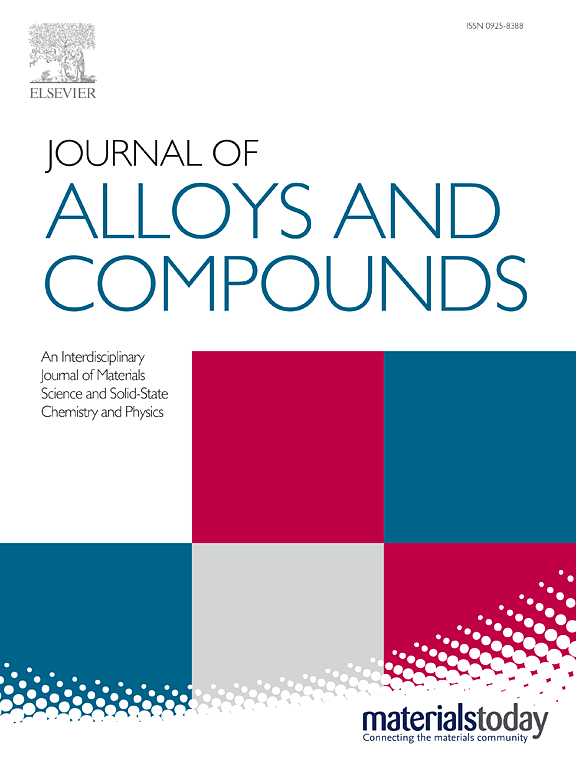高频感应加热冷喷涂CuCrZr-W复合涂层微孔的超快愈合
IF 5.8
2区 材料科学
Q2 CHEMISTRY, PHYSICAL
引用次数: 0
摘要
硬颗粒冷喷涂复合涂层的微孔愈合仍然是实现最佳性能的挑战。本研究采用高频感应加热(HFIH),利用高电阻W粒子和微孔边界处的电流绕行和拥挤,在17秒内快速修复冷喷涂CuCrZr-W复合涂层中的微孔。在冷喷涂过程中,CuCrZr颗粒的有限塑性变形在颗粒界面处形成微孔。HFIH在CuCrZr-W界面处产生局部高电流密度,产生显著的热效应和非热效应。焦耳加热提高了局部温度,促进了Cu晶粒的快速生长和原子扩散,导致微孔的收缩和部分愈合。此外,高电流密度驱动原子(如Cr和Zr)在界面处积聚,增强了微孔填充,并通过原子扩散在CuCrZr/W界面处形成更厚的非晶层,提高了界面键合。结果表明,涂层的电导率从20% IACS显著提高到44% IACS,涂层与基体之间的抗剪强度从169 MPa提高到189 MPa。本文章由计算机程序翻译,如有差异,请以英文原文为准。
Ultrafast healing of micro-pores in cold-sprayed CuCrZr-W composite coatings via high-frequency induction heating
Micro-pore healing in cold-sprayed composite coatings with hard particles remains challenging for achieving optimal performance. This work employs high-frequency induction heating (HFIH) to rapidly heal micro-pores (within 17 s) in a cold sprayed CuCrZr-W composite coating by leveraging current detouring and crowding at the boundaries of high-resistance W particles and micro-pores. During cold spraying, limited plastic deformation of CuCrZr particles creates micro-pores at particle interfaces. HFIH induces localized high current density at the CuCrZr-W interface, generating significant thermal and athermal effects. Joule heating elevates local temperatures, promoting rapid Cu grain growth and atomic diffusion, which leads to the shrinkage and partial healing of micro-pores. Furthermore, high current density drives atoms (such as Cr and Zr) accumulation at the interface, enhancing micro-pore filling, and forms a thicker amorphous layer at the CuCrZr/W interface through atomic diffusion, improving the interfacial bonding. As a result, the coating’s conductivity significantly rises from 20% IACS to 44% IACS, and shear strength between the coating and substrate increases from 169 MPa to 189 MPa.
求助全文
通过发布文献求助,成功后即可免费获取论文全文。
去求助
来源期刊

Journal of Alloys and Compounds
工程技术-材料科学:综合
CiteScore
11.10
自引率
14.50%
发文量
5146
审稿时长
67 days
期刊介绍:
The Journal of Alloys and Compounds is intended to serve as an international medium for the publication of work on solid materials comprising compounds as well as alloys. Its great strength lies in the diversity of discipline which it encompasses, drawing together results from materials science, solid-state chemistry and physics.
 求助内容:
求助内容: 应助结果提醒方式:
应助结果提醒方式:


